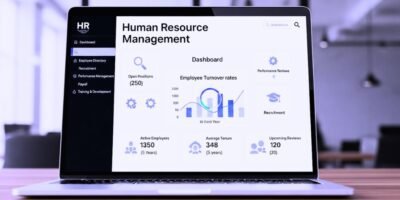Organizations recognize that their people are the most valuable assets in today’s dynamic business landscape. Human resource strategy is critical in aligning the organization’s workforce with its business goals and objectives. In this article, we will delve into the concept of Human Resource Strategy, its importance, key components, challenges, and its impact on organizational success.
Understanding HR Strategy
Human Resource Strategy is a long-term plan aligning human resource management practices with the organization’s strategic objectives. It involves developing a roadmap for acquiring, developing, and managing the organization’s workforce to achieve a competitive advantage. It encompasses various HR functions, including recruitment and selection, training and development, performance management, compensation and benefits, and employee engagement. It aims to optimize the organization’s human capital to drive business success. It involves developing and implementing a comprehensive plan to attract, develop, motivate, and retain top talent while ensuring that Human Resource Strategy practices support the organization’s strategic priorities.
Key Components of Human Resource Strategy
To develop an effective Human Resource Strategy, organizations need to consider the following key components:
- Alignment with Business Strategy: Human Resource Strategy should closely align with the organization’s overall business strategy. It requires a deep understanding of the organization’s goals, objectives, and values to ensure that HR practices directly contribute to achieving business outcomes.
- Workforce Planning and Talent Acquisition: A robust Human Resource Strategy involves identifying the skills, competencies, and talent required to achieve strategic goals. It includes workforce planning, forecasting future talent needs, and implementing effective recruitment and selection processes to attract and onboard the right individuals.
- Employee Development and Training: It emphasizes developing employees’ skills, knowledge, and capabilities. It involves providing training and development opportunities, creating career paths, and fostering a culture of continuous learning to enhance employees’ performance and engagement.
- Performance Management and Rewards: An effective Human Resource Strategy includes performance management processes that align individual and team goals with organizational objectives. It involves setting performance expectations, providing regular feedback, and implementing reward systems that recognize and motivate high performers.
- Employee Engagement and Retention: The Human Resource Strategy creates an environment that fosters employee engagement, satisfaction, and retention. It involves implementing initiatives to enhance work-life balance, promote a positive organizational culture, and recognize and reward employee contributions.
Challenges in Human Resource Strategy
Developing and implementing a Human Resource Strategy is not without its challenges. Some common challenges organizations may face include:
- Changing Business Landscape: The dynamic nature of the business environment requires Human Resource Strategy to adapt and respond to changes in the industry, market conditions, and technological advancements. HR leaders must stay updated and agile in aligning HR practices with evolving business needs.
- Talent Shortage and Competition: The need for more top talent and increased competition for skilled individuals pose challenges in talent acquisition and retention. Organizations must develop innovative strategies to attract and retain top performers in a competitive job market.
- Rapid Technological Advancements: It must leverage technology to streamline HR processes, enhance employee experience, and enable data-driven decision-making. Adopting and integrating new technologies require careful planning and investment.
- Employee Engagement and Diversity: Fostering employee engagement and managing a diverse workforce can be challenging. It should embrace diversity and inclusion initiatives, promote a positive work culture, and create opportunities for employee growth and development.
- Evolving Regulatory Environment: Compliance with employment laws, regulations, and labor practices constantly challenges HR leaders. Staying informed and ensuring HR practices align with legal requirements is crucial for organizations to avoid legal consequences.
Impact of Human Resource Strategy
An effective Human Resource Strategy has a significant impact on organizational success:
- Alignment with Business Objectives: Human Resource Strategy closely aligned with business goals ensures that HR initiatives contribute to overall organizational success. This alignment enhances operational efficiency, productivity, and profitability.
- Talent Acquisition and Retention: A well-defined Human Resource Strategy helps attract and retain top talent. It ensures the organization has the right people in the right roles, reducing turnover and increasing employee loyalty and commitment.
- Employee Development and Engagement: Human Resource Strategy prioritizing employee development and engagement foster a high-performance culture. They enhance employees’ skills, job satisfaction, and motivation, improving productivity and innovation.
- Employer Branding: A strong Human Resource Strategy contributes to building a positive employer brand. It enhances the organization’s reputation, making it an employer of choice and attracting top talent.
- Change Management: It plays a crucial role in managing organizational change. It supports effective communication, training, and corporate development initiatives during transformation, ensuring smooth transitions and minimizing resistance.
Conclusion
An effective Human Resource Strategy is essential for organizations to thrive in today’s competitive business landscape. It involves aligning HR practices with business objectives, attracting and retaining top talent, developing employee skills, and fostering a culture of engagement and innovation. By strategically managing their human capital, organizations can gain a competitive advantage, drive business success, and create a work environment that attracts and retains top talent. It is a powerful tool that empowers organizations to leverage their most valuable asset—their people—in achieving long-term growth and sustainability.













